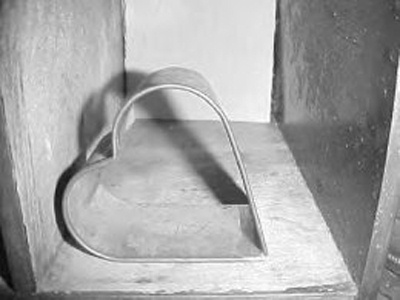All Nonfiction
- Bullying
- Books
- Academic
- Author Interviews
- Celebrity interviews
- College Articles
- College Essays
- Educator of the Year
- Heroes
- Interviews
- Memoir
- Personal Experience
- Sports
- Travel & Culture
All Opinions
- Bullying
- Current Events / Politics
- Discrimination
- Drugs / Alcohol / Smoking
- Entertainment / Celebrities
- Environment
- Love / Relationships
- Movies / Music / TV
- Pop Culture / Trends
- School / College
- Social Issues / Civics
- Spirituality / Religion
- Sports / Hobbies
All Hot Topics
- Bullying
- Community Service
- Environment
- Health
- Letters to the Editor
- Pride & Prejudice
- What Matters
- Back
Summer Guide
- Program Links
- Program Reviews
- Back
College Guide
- College Links
- College Reviews
- College Essays
- College Articles
- Back
Have a Heart...Save a Life
“Don’t think of organ donations as giving up part of yourself to keep a total stranger alive. It’s really a total stranger giving up almost all of themselves to keep a part of you alive”-Unknown. An organ transplant is when an organ or portion of an organ is taken from one person, and transplanted to the person in need of a new and healthy organ. The purpose is to help people who are anywhere from mildly to deathly sick and get them back to their regular lives and healthy again. There are many reasons why various organs may need a transplant. When you first get your driver’s license, and every time you renew it thereafter, you are asked if you want to be an organ donor in the event that you are in a fatal accident. However, organs are not only harvested from deceased people. Living people donate, too. Every organ transplant has a unique surgical plan tailored to the patient’s needs. There are obviously risks with getting a organ transplant and one of them is rejection.
What organs can be transplanted and why would it be necessary?
The most commonly transplanted organs are the kidney, heart, lung, liver, and pancreas. Many complications can cause someone to desperately need these gifts of life. Someone who is suffering from kidney failure would obviously need a kidney transplant. The most common causes of kidney failure is hypertension, kidney stones, kidney disease, diabetes, and inflammatory disease of the nephrons and glomeruli. Kidney failure can also be caused by side effects of drug therapy for other diseases. If you have cirrhosis of the liver you would need a transplant. Some of the symptoms of cirrhosis is being jaundice, yellowing of the eyes, encephalopathy, bruising and bleeding easily, and vomiting blood or passing blood through the stools. The picture to the left shows what a diseased liver looks like If you have COPD, bronchiectasis, or cystic fibrosis you would need a lung transplant. Many people who get pancreas transplants have to take insulin because they don’t produce enough. But a transplant could be a solution to the problem. Patients with heart failure usually are in great need for a heart transplant. The most common cause for failure is coronary artery disease and heart attacks.
What are the two sources of organ transplants and how are people matched?
The two main types of organ donations are live donors and deceased donors. A living donor obviously can’t give someone their heart but they can give them a kidney, partial liver, lobe of the lung, and part of the pancreas. A deceased donor is brain dead which means that their organs are in perfect condition, but there is no brain activity to keep them alive. Usually the donor has suffered from severe brain injuries from car accidents or strokes and they are on life support with no hope to survive. An option for some people, may be a living donor donation which is usually a relative or a close friend. But for others, they need to go on a waiting list and once a person who will be the closest match comes up, the transplant surgery will be performed.
How is the surgery performed?
In every transplant surgery the organ is first biopsied. Then the patient is prepped with IVs, blood tests, catheter, and things of that sort. Next, they will be wheeled into the operating room and will be put under general anesthesia. But every organ has a different process of being transplanted.
Kidney
After doing the common protocol, an incision is made in the lower abdomen. Then the donor's kidney is examined once more and then is inserted. The donor’s left would be on recipient's right and vice versa. This is done for easier connection to the bladder. Next, the vein and artery of the donor kidney is sutured to the external vein and iliac artery.The donor’s ureter is connected to the patient’s bladder and JP drains may be inserted to drain excess fluid. Then they will be sewn back together with stitches and possibly staples. After everything is finished they will be brought to an ICU and will be closely monitored.
Liver
For the liver, the incision is made right below the rib cage. The diseased liver is carefully removed so that the least amount of additional damage is done. Next, the liver or portion of liver is examined once more before it is positioned into place. Depending on if the patient is receiving a full organ or not, different surgical techniques are used. The donor liver will be attached to blood vessels as well as the bile ducts and blood flow will begin. Lastly, they will be sewn or stapled back up with JP drains inserted and the patient will be brought to an ICU.
Heart
In the case of a heart transplant, an incision is made down the center of the chest and the breastbone is broken into 2 pieces so that the heart is now exposed. The recipient is then put on a bypass machine while their heart is being removed. Then the donor’s heart is connected and they will be taken off of bypass. The new heart is then shocked with paddles to restart the heartbeat. The sternum and chest is sewn back together and tubes are inserted to drain fluid. Once the patient is stable they are brought to an ICU.
Lung
Once the patient are prepped, an incision is made on the side that the lung is being transplanted on or horizontally for a bilateral sequential transplant. The diseased lung(s) are removed. The new airways and blood vessels are connected. The incision is closed, tubes are inserted to drain excess fluid, and the patient is brought to ICU.
Pancreas
An incision is first made down the center of the abdomen. The donor’s pancreas and small part of the intestine is put into place. Something that is very different from the other transplants is that the old pancreas is left to aid in digestion. Then the blood vessels are connected and the incision is closed. Like all of the other transplants, you are then brought to the ICU.
What is rejection and how is it prevented?
Rejection means that the recipient’s body literally rejects the new organ. This happens because the organ is like a foreign object to their body. But this can be prevented by taking anti rejection medications. Different types of anti rejection medications are Imuran, Cyclosporine, Sirolimus, Prograf, and CellCept. In order to keep their organ healthy, they will have to take some of these drugs for their whole life. But the dosage may be adjusted to what their body needs.
Doctors, nurses and everyone who plays a role in a transplant clearly undertakes a very complicated task but with an extraordinary outcome. Now that it is obvious how much effort and planning goes into an organ transplant, I hope that you decide to become an organ donor. Would you really want to give up an opportunity to save someone’s life?

Similar Articles
JOIN THE DISCUSSION
This article has 0 comments.
